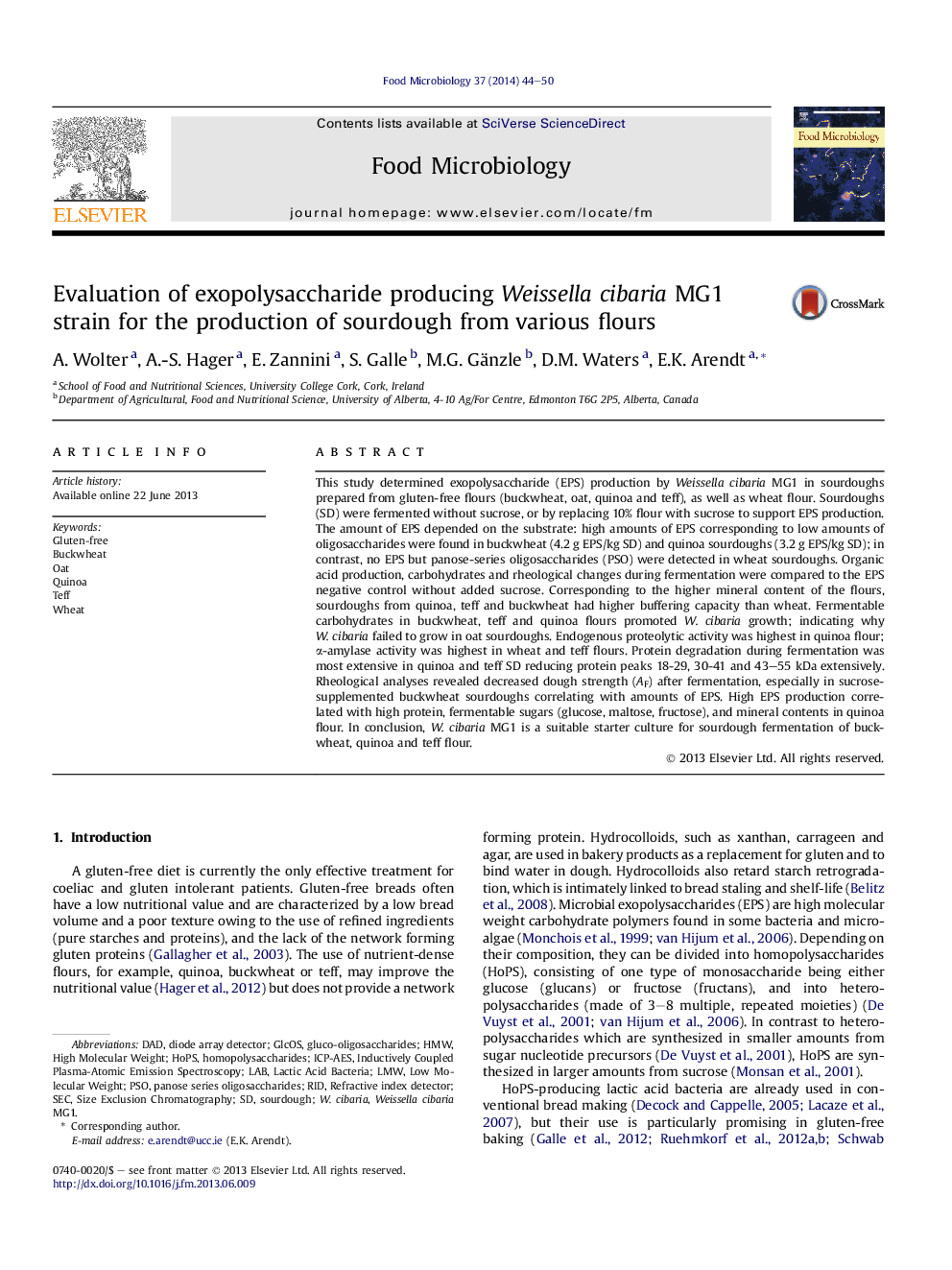| Article ID | Journal | Published Year | Pages | File Type |
|---|---|---|---|---|
| 4362957 | Food Microbiology | 2014 | 7 Pages |
This study determined exopolysaccharide (EPS) production by Weissella cibaria MG1 in sourdoughs prepared from gluten-free flours (buckwheat, oat, quinoa and teff), as well as wheat flour. Sourdoughs (SD) were fermented without sucrose, or by replacing 10% flour with sucrose to support EPS production. The amount of EPS depended on the substrate: high amounts of EPS corresponding to low amounts of oligosaccharides were found in buckwheat (4.2 g EPS/kg SD) and quinoa sourdoughs (3.2 g EPS/kg SD); in contrast, no EPS but panose-series oligosaccharides (PSO) were detected in wheat sourdoughs. Organic acid production, carbohydrates and rheological changes during fermentation were compared to the EPS negative control without added sucrose. Corresponding to the higher mineral content of the flours, sourdoughs from quinoa, teff and buckwheat had higher buffering capacity than wheat. Fermentable carbohydrates in buckwheat, teff and quinoa flours promoted W. cibaria growth; indicating why W. cibaria failed to grow in oat sourdoughs. Endogenous proteolytic activity was highest in quinoa flour; α-amylase activity was highest in wheat and teff flours. Protein degradation during fermentation was most extensive in quinoa and teff SD reducing protein peaks 18-29, 30-41 and 43–55 kDa extensively. Rheological analyses revealed decreased dough strength (AF) after fermentation, especially in sucrose-supplemented buckwheat sourdoughs correlating with amounts of EPS. High EPS production correlated with high protein, fermentable sugars (glucose, maltose, fructose), and mineral contents in quinoa flour. In conclusion, W. cibaria MG1 is a suitable starter culture for sourdough fermentation of buckwheat, quinoa and teff flour.
